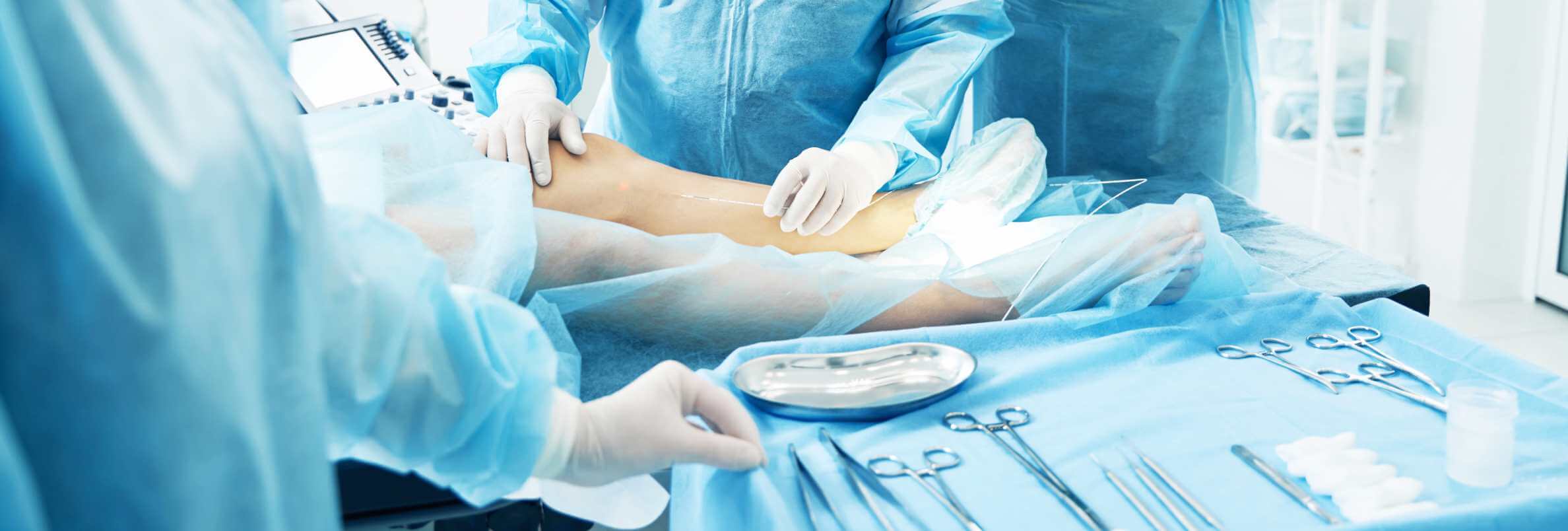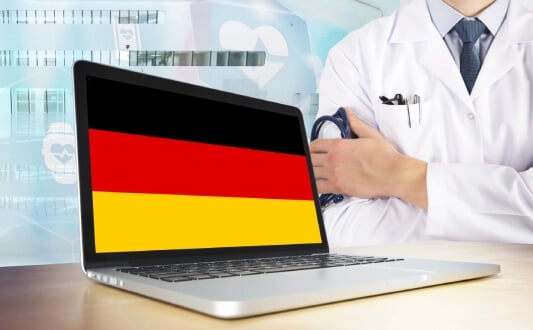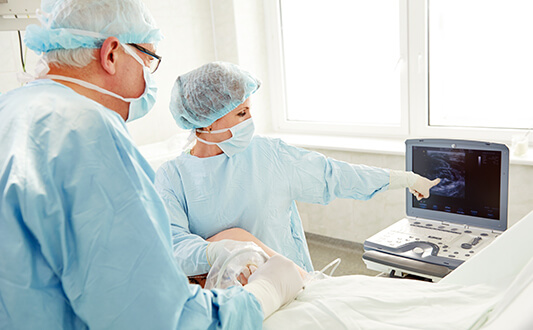For a long time, it was believed that varicose veins could only be corrected by removing large superficial veins and ligating the perforating veins. When CHIVA was introduced in 1988, many surgeons met it with hostility. The method was not widely used because it contradicted the basic concepts of varicose vein treatment. But decades later, studies have shown that the risk of varicose vein recurrence after CHIVA is lower than after other surgical interventions and ablative procedures. Today, this technique has received a new life and is taking on an increasingly important place in both vascular surgery and phlebology. CHIVA is a non-traumatic outpatient surgical procedure with a low risk of complications, preserving physiological blood flow in the leg veins and ensuring that treatment results are maintained for decades.
Content
- Principles of the method
- Advantages of the method
- Disadvantages of the CHIVA method
- Where can CHIVA be done?
Principles of the method
Outpatient conservative hemodynamic correction of venous insufficiency (Conservatrice et Hémodynamique de l’Insuffisance Veineuse en Ambulatoire), or CHIVA for short, is a method developed by the French angiologist C. Franceschi, which has become widespread throughout the world, especially in Europe.
Unlike standard surgical procedures that involve the removal or obliteration of a large vein, CHIVA preserves these veins (including the great and small saphenous veins) and allows them to continue to function, thereby providing a reliable treatment result with a low risk of recurrence even in the long term, decades after the procedure. Even if recurrences do occur, they are easier to treat than recurrences that occur after conventional surgery to remove the trunk of a large vein.
The procedure differs depending on the type of pathological shunt. A Franceschi shunt is a venous outflow pathway that carries not only its own blood but also additional blood from other blood vessels, overloading the area of the venous bed. There are six types of shunts that can be identified by ultrasound.
The features of the CHIVA procedure are as follows:
- Individualized surgery for each patient.
- Before the procedure, an ultrasound scan is done to determine the reflux points. This is where the blood starts to flow back into the deep veins.
- Treatment tactics are determined after measuring the great saphenous vein with an ultrasound scan below 15 cm from the sapheno-femoral junction (the junction of the great saphenous vein with the femoral vein).
- The operation is performed on an outpatient basis.
- The great saphenous vein is preserved, although the blood flow through it may have different directions and more often remains descending.
- The perforating veins are not ligated as in conventional surgery but are preserved for blood outflow.
- The procedure results in the normalization of blood drainage from the superficial venous system into the deep venous system.
- Following surgery, the dilated tributaries are reduced, returning to normal within a few months.
The procedure is performed in a variety of ways, depending on the condition of the venous system. In most cases, the surgeon ligates the sapheno-femoral junction and crosses the failed tributaries on the thigh by microphlebectomy, thus disconnecting them from the great saphenous vein. Blood is then drained through return perforators.
In all variants of the procedure, CHIVA does not remove the saphenous vein but ensures blood flow from it to the deep venous system of the lower extremity by creating shunts (bypasses). As a result of this outpatient surgery, blood flow from the dilated vein is ensured through the saphenous tributaries, return veins, and perforating veins.
The main advantage of this method is the low risk of recurrence. This is due to the preservation of the great saphenous vein, which prevents the formation of new blood vessels.
The operation is performed under the guidance of duplex scanning. This is a variant of ultrasound that involves simultaneous scanning using two methods: B-mode to obtain images of blood vessels and Doppler mode to assess blood flow parameters. This feature has become a limitation for the widespread adoption of the technique, despite its high efficiency, as not all surgeons are skilled in ultrasound techniques.
Advantages of the method
The CHIVA venous preservation method is more effective for the treatment of varicose veins than most other surgical interventions and minimally invasive procedures because it has a lower recurrence rate. Good results can be achieved by preserving the physiological movement of the blood.
The main benefits of the CHIVA procedure over classical operations are as follows:
- Blood drainage through the great saphenous vein is preserved, which ensures good hemodynamics of the lower extremity and reduces the frequency of recurrences
- Reflux (backflow of blood) in the pathologically altered superficial parts of the venous system is eliminated
- Varicose vein surgery is less traumatic
- No hospitalization required
- No risk of cutaneous nerve damage
- No significant postoperative discomfort, hematomas, or skin pigmentation
- In the future, the saphenous vein can be used as an autograft (an autovenous vascular prosthesis)
- Preserving the saphenous vein reduces the consequences of deep vein thrombosis if the patient develops this disease in the future
Below are the proven benefits of the CHIVA procedure:
- 88% of patients visually have no varicose veins in the leg after six months
- 85% of patients have no reflux (reverse blood flow) through the great saphenous vein (according to duplex scan findings)
- 25% lower risk of varicose vein recurrence during 3-year follow-up compared to saphenous vein stripping
- The risk of varicose vein recurrence within 10 years is 35% with stripping and 18% with CHIVA (the risk of recurrence is halved)
Therefore, the main advantage of CHIVA is the reduced risk of varicose vein recurrence compared to other treatment options. The more time that passes since the surgery, the more noticeable this difference in the likelihood of recurrence becomes. This means that if you choose the CHIVA technique for varicose veins, you are unlikely to need repeated invasive procedures and surgeries even in the distant future.
Disadvantages of the CHIVA method
The main disadvantage of the CHIVA method for varicose vein treatment is that it is not available everywhere. It requires the surgeon to be trained in duplex scanning techniques. The CHIVA procedure is therefore common in countries where phlebologists perform the ultrasound themselves, but is rarely used where one specialist performs the ultrasound and another performs the surgery. For this reason, CHIVA is used as one of the main methods of varicose vein treatment in many European countries, most commonly in Spain and Italy, as well as in some clinics in France and Germany, but in most countries in the world, the CHIVA method is not widespread.
A survey of surgeons in different countries showed that the highest rate of CHIVA use is in Spain, where up to 50% of varicose vein patients are treated with this method. In France, the birthplace of this varicose vein procedure, it is used in only 5% of cases.
Where can CHIVA be done?
If you want to undergo CHIVA treatment, you can go to one of the European hospitals. For example, doctors from the Department of Vascular Surgery at the Meoclinic Hospital Berlin in Germany perform such operations.
You can find out the prices, compare the varicose vein removal cost in different clinics, and make an appointment for your treatment for your preferred dates through the Booking Health website. The website presents the world's best hospitals. You can get advice from medical tourism specialists, and Booking Health employees will take care of all the arrangements for your trip to Germany.
Choose treatment abroad and you will for sure get the best results!
Authors:
The article was edited by medical experts, board certified doctors Dr. Nadezhda Ivanisova and Dr. Vadim Zhiliuk. For the treatment of the conditions referred to in the article, you must consult a doctor; the information in the article is not intended for self-medication!
Our editorial policy, which details our commitment to accuracy and transparency, is available here. Click this link to review our policies.
Sources:
Phlebology: The Journal of Venous Disease
National Center for Biotechnology
Read:
Why Booking Health - questions and answers
How to make right decision when choosing the clinic and specialist
7 reasons to trust to the rating of clinics on the Booking Health portal
Don't know where to start?
Contact Booking Health






